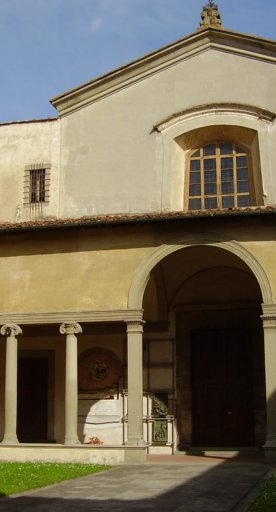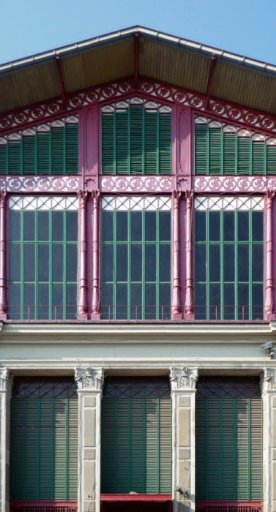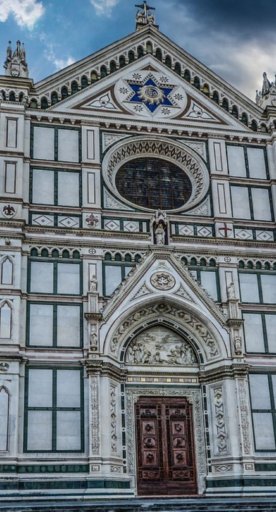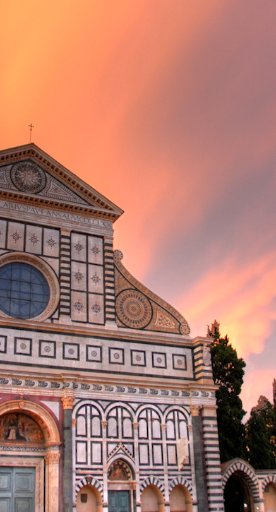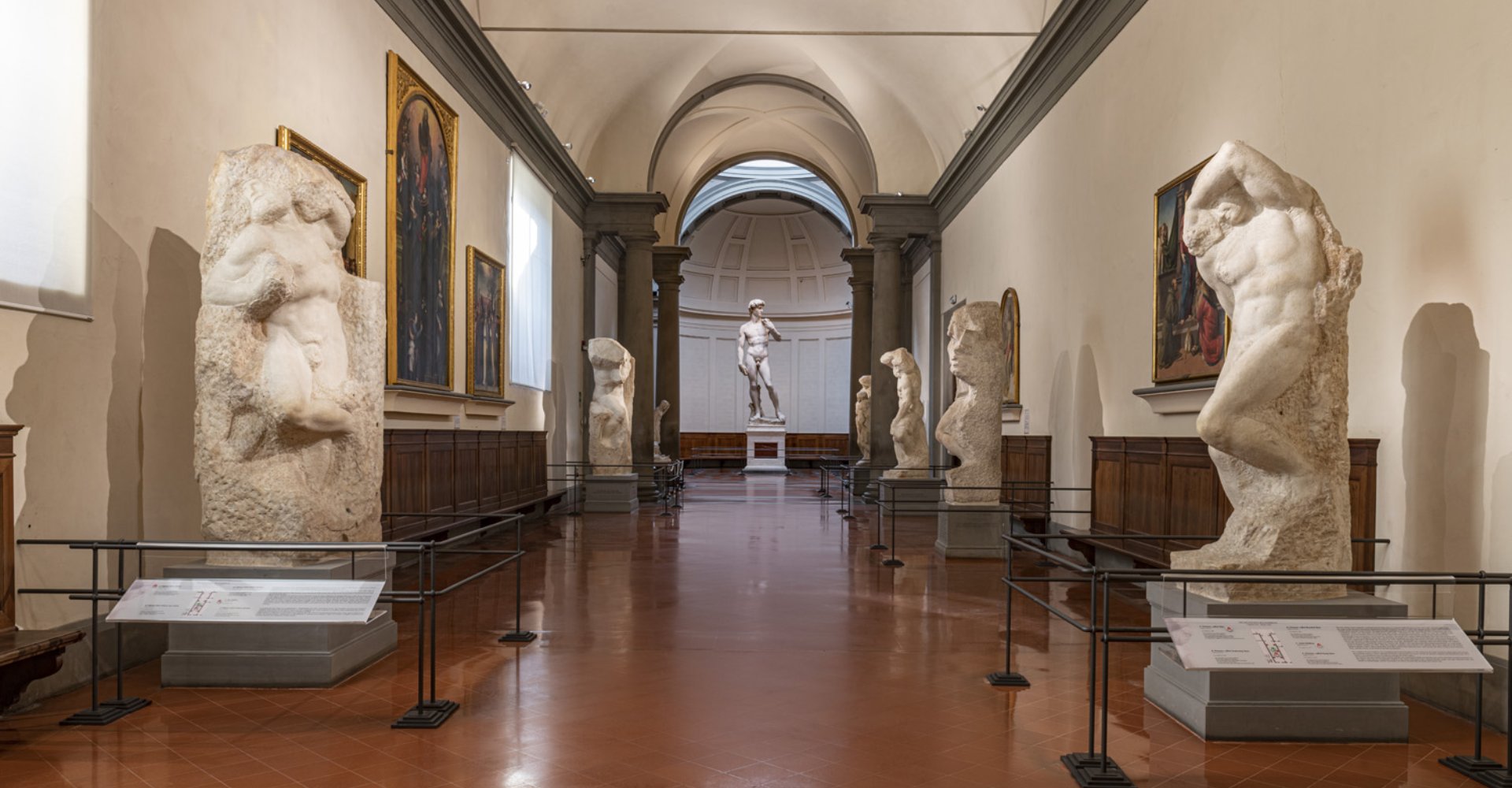
Gallery of the Academy of Florence
Not only Michelangelo’s masterpieces: painting, music and one of the world’s most important sculpture collections. A museum waiting to be discovered.
The Gallery of the Academy (Galleria dell’Accademia) is one of the most important museums in the world.
Located in the historic center of Florence, just a short walk from Piazza San Marco, it houses the world’s largest number of Michelangelo’s sculptures, including the famous David.
The Tribuna of David and the Gallery of the Slaves
This colossal work was brought here in 1873, moved from its original location in Piazza della Signoria: the figure of the young David - which has become one of the symbols of Florence - defeating the giant, embodied the freedom of the Florentine Republic, and for this reason the statue was placed in front of Palazzo Vecchio.
Today it is housed in a specially built pedestal, scenically placed at the end of a gallery, enveloped in natural lighting provided by a vast skylight.
Also on view at the Academy are the Prigioni (or Slaves), the famous four unfinished sculptures of Michelangelo, figures that seem to want to break free from the marble that imprisons them and that are among the best examples of Michelangelo’s working method, the unfinished (non-finito).
Originally made for the tomb of Julius II, upon his death they were given to Grand Duke Cosimo de’ Medici, who used them to decorate the Grotto of Buontalenti in the Boboli Gardens.
The Awakening Slave, the Young Slave, the Bearded Slave and the Atlas Slave arrived at the Gallery only in 1908.
The collection of works by Michelangelo also includes Palestrina Pietà and St. Matthew.
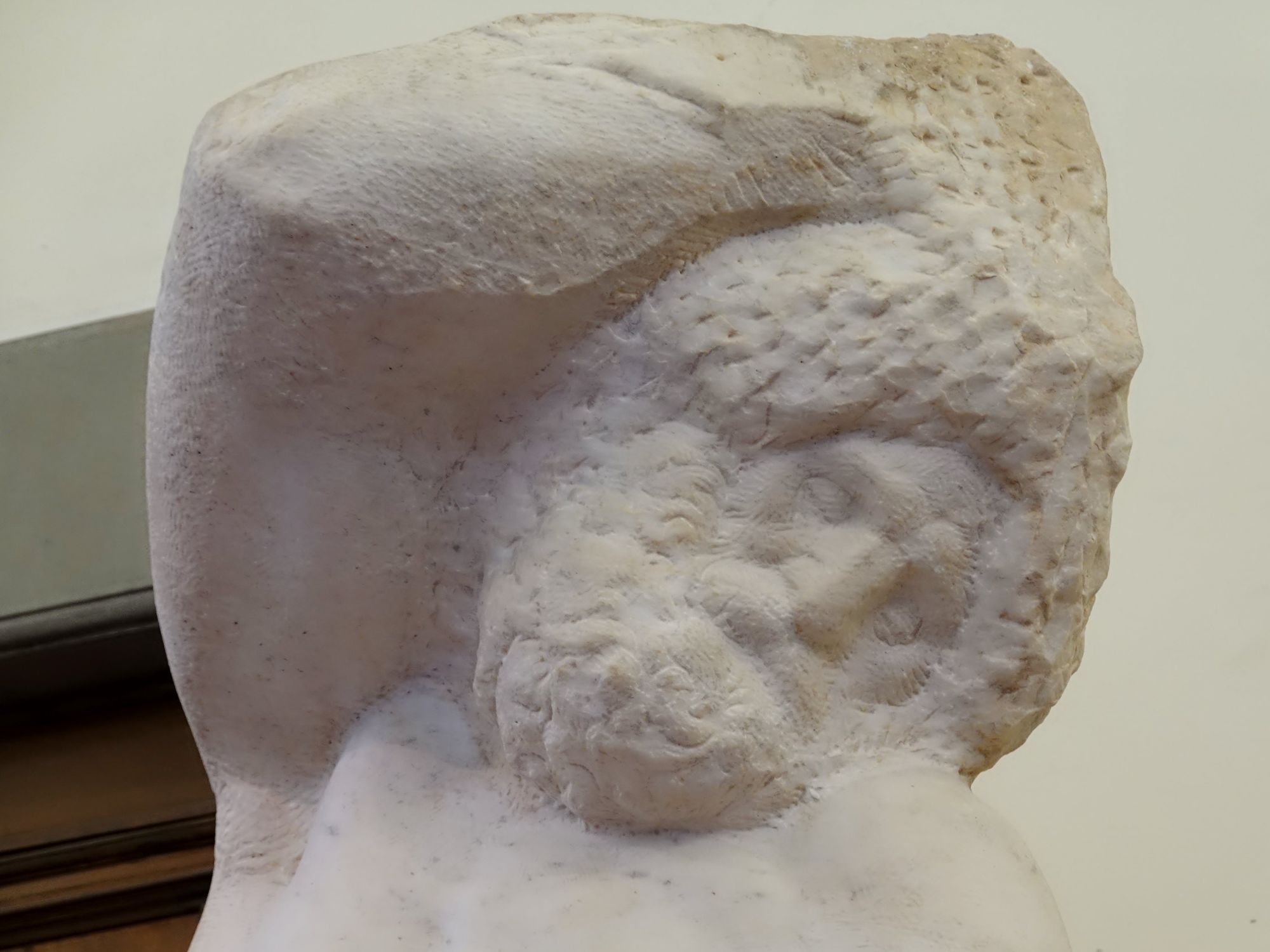
The Hall of the Colossus and the Plaster Cast Gallery
In addition to Michelangelo’s masterpieces, the Florentine museum is home to other important works, such as the plaster model used by Giambologna to make the Rape of the Sabines, displayed in the renovated Hall of the Colossus. This extremely rare 16th-century model life-sized is one of the few that has arrived intact to the present day; the original can be seen in the Loggia dei Lanzi.
The 19th Century Room houses the Plaster Cast Gallery, where the atmosphere of the studio of Lorenzo Bartolini, one of the most important Italian sculptors who lived at the turn of the 18th and 19th centuries, has been recreated. The room holds the artist’s extensive collection of plaster casts, which, restored and cleaned, stand out even more against the “plaster cast” color, a powder blue created especially for the walls.
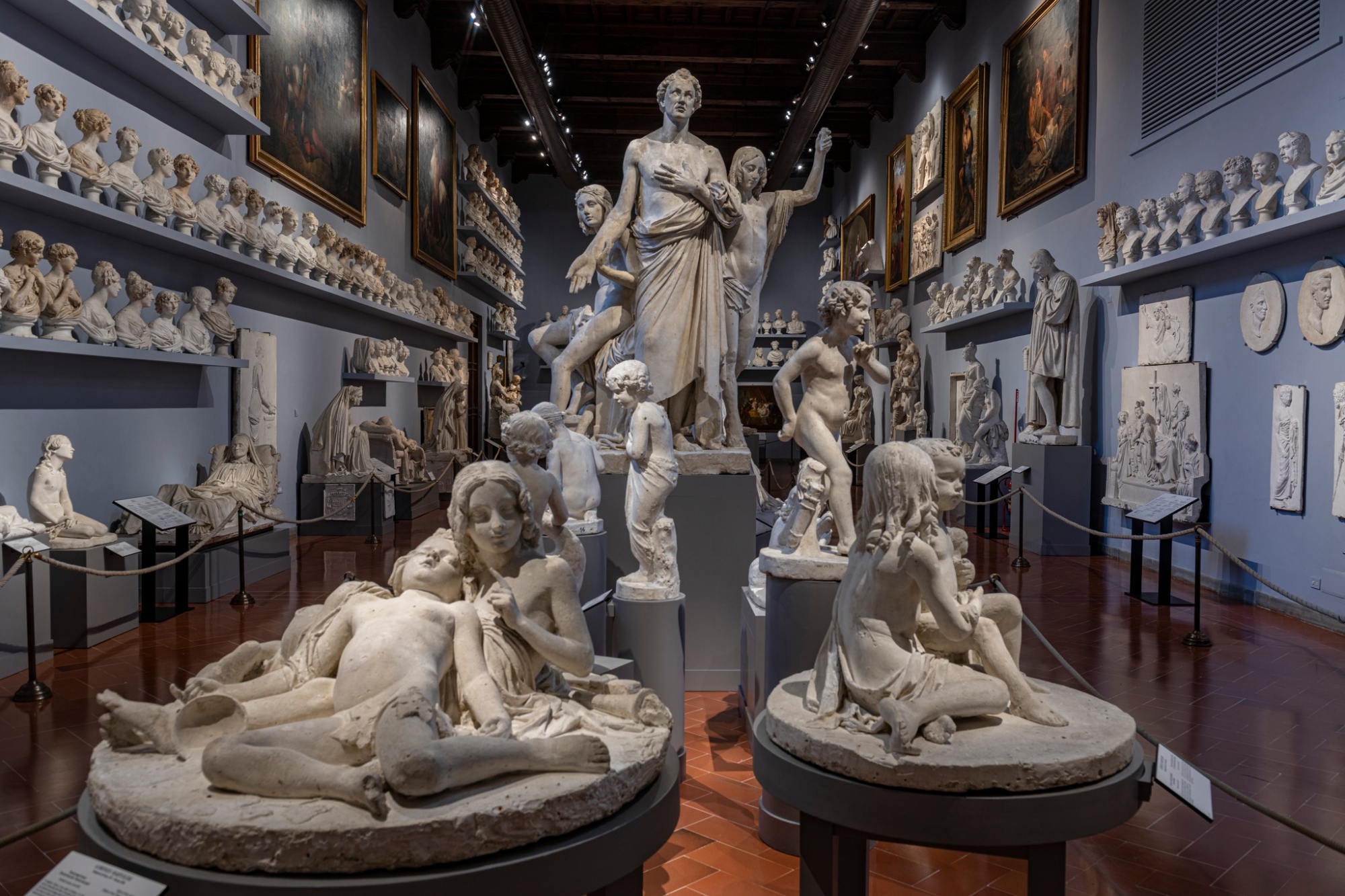
The paintings
As for the rich painting collection, the Academy houses Madonna of the Sea and Madonna and Child by Sandro Botticelli, Saint Stephen by Domenico Ghirlandaio, as well as works by Pontormo, Perugino, Andrea del Sarto, Filippino Lippi and Bronzino.
The collection also includes a collection of gold ground paintings from the 13th to the early 15th century and the world’s most important nucleus of works by Lorenzo Monaco.
The Collection of the Conservatory Luigi Cherubini
The Department of Musical Instruments houses the Collection of the “Luigi Cherubini” Conservatory of Florence. Here are on display about fifty musical instruments from the private collections of the Grand Dukes of Tuscany, the Medici and the Lorraine.
These include a tenor viola and cello by Antonio Stradivari, both part of the quintet made in 1690 for Grand Prince Ferdinando de’ Medici, a Niccolò Amati cello from 1650, and an oval spinet built by Bartolomeo Cristofori.
Reservations for a visit to the Gallery of the Academy are not mandatory, but definitely recommended. See the information for purchasing tickets through the official sales channels.
Information on accessibility: galleriaaccademiafirenze.it






